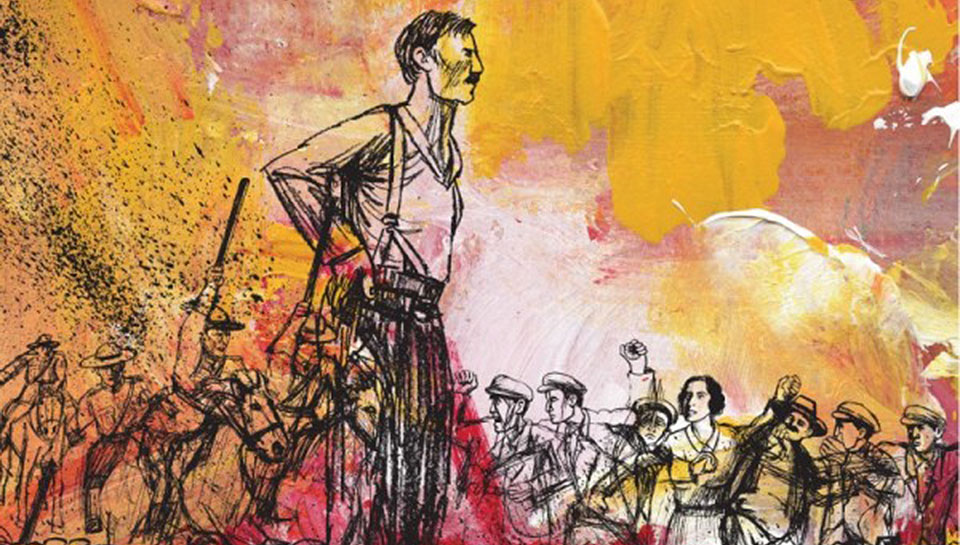
“A picture is worth a thousand words” is a saying that rings true, if the escalating popularity of graphic novels and non-fiction is any indication.
“1919 – a Graphic History of the Winnipeg General Strike” is one of the best of this genre. The artwork is by Vancouver’s David Lester, who completed 93 pages in just 53 days to meet a deadline. The four-member not-for-profit Graphic History Collective (Sean Carleton, Robin Folvik, Kara Sievewright, Julia Smith) worked with the Manitoba Federation of Labour, the 1919 Winnipeg General Strike Centenary Committee, and various academics, activists and researchers to put together this dramatic account of the most powerful general strike in Canadian history.
This is a timely contribution to public understanding of the event which did so much to shape the working-class struggles of the 20th century, told in a way that reflects and amplifies the left politics which remain crucial today.
As stated in the preface, “This comic book does not seek to simply celebrate the Winnipeg General Strike…. it revisits the workers’ revolt in Winnipeg to introduce new generations to the many lessons working-class history holds for workers today.”
Perhaps most important, the images and text of “1919” drive home the point that the events in Winnipeg were not simply a rather quaint mass strike in one prairie city; this was a bitter clash between most of the city’s working class and a ruling capitalist elite determined to use every dirty weapon at its disposal to smash a rebellion for better working and living conditions. Lester’s illustrations bring to life the six-week general strike, the power of mass working-class resistance and action, and the violence inflicted by the capitalist state.
The book pays a welcome tribute to the origins of political struggle on the prairies, in particular, the 1885 uprising by the Metis and their Cree, Assiniboine and Saulteaux allies under the leadership of Louis Riel. That struggle, though defeated, marked the beginning of resistance against the new Canadian state’s project of capitalist expansion into the west, which saw tens of thousands of impoverished European workers migrate to Manitoba and beyond in search of a better life.
For many, these dreams ran into the harsh reality of ruthless exploitation in the mines, mills, and shops of western Canada. Other workers were convinced to enlist for the First World War, which educated them in the deadly consequences of imperialist war. “1919” shows how all these factors came together to bring 35,000 workers out on strike, much to the dismay of the bosses and the big business governments of Manitoba and Canada.
The fear of the capitalist class was stoked by the growing number of solidarity strikes across Canada, and by a rally of 10,000 returned soldiers in support of the strikers at the Legislature in Winnipeg. These and other episodes are depicted clearly and sympathetically, providing a sweeping historical overview of the clash which shook the country a century ago.
The book touches on the political and social reverberations of 1919, such as the formation of the Communist Party of Canada and the Cooperative Commonwealth Federation (CCF), and on struggles from more recent periods, such as the Quebec General Strike of 1972 and the the eleven Ontario “Days of Action” between late 1995 and 1998. It includes two pages on the art of labour history and a fascinating photo essay about the working class of Winnipeg a century ago.
“1919” is a tremendous addition to working class literature in Canada, and an excellent gift for anyone with an interest in the struggle for social and economic freedom. It can be ordered through any major bookstore in your city, but please try to go through one of the independents.
1919: A Graphic History of the Winnipeg General Strike
By the Graphic History Collective and David Lester
Published by Between the Lines, 2019, 107 pages, ISBN 978-1-77113-4209-0 (softcover)










